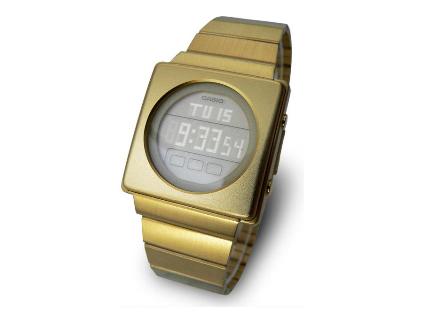Well it's About Time! The Parable of the Digital Watch - Mike Einstein - MediaBizBlogger

Remember when digital watches were all the rage? It was the early 1970s, and nothing flattered a good apache scarf and muttonchops like a big ruby-crystaled digital watch. Talk about cool. $300 out the door, battery included. Hans Conried (Dr. Terwilliger ofThe 5000 Fingers of Dr. T.fame) would've asked: "Is it atomic?" "Yes sir, very atomic!"
But where are they now? Last time I looked, digital watches had come full circle from Mod Squad accoutrement to Happy Meal prize. In fact, I think it now costs more to replace the battery than it does to replace the whole watch!
Just how did the digital watch become a footnote of the 70s? The answer was, and is, literally staring us right in the clock face, and all I can say is it's about time.
To see just how far we haven't come, let's review the premise behind this early foray into all things digital.
I'm guessing that the idea was to apply new quartz-crystal digital technology to produce time accuracy to within one hundredth of a second. But unless your particular watch was synchronized to the atomic clock in Colorado, it would always be a least a hundredth of a second or two either too fast or too slow. Perhaps (perish the thought) as much as even seven or eight hundredths of a second off! Technically (no pun intended), your new watch, though capable, would never show the exact time, unless, of course, it stopped cold, which would render it perfectly accurate for two one-hundredths of a second each day (or, in the case of military time, only one one-hundredth of a second each day). Then again, if it stopped cold, you wouldn't be able to read the display at all, so you'd have absolutely no idea what time it was. Speaking of which, battery-willing, many of the early digital watches featured display backlight buttons that required two-handed operation, relegating the user to old "cheap-suit joke" status: "Don't you feel sorry for that poor bastard?" "Yeah, but he sure has a good lookin' watch!" Lastly, pity the guy whose digital display -- lighted or not -- was so small he needed reading glasses just to know what time it wasn't.
This new technology threatened our entire concept of time. Instead of asking: "Is it lunchtime?" we'd say "Not quite. In fact, it's only 11:46:18." Or, "It's not quarter to eight. It's seven forty-two and ten…no, make that fourteen seconds." By the time you read the whole display, it really was quarter to eight. And if you misplaced the 60-page owner's manual you were basically screwed every time you ventured into a different time zone.
The reason these new-fangled contraptions never made the cut is because they took a perfectly good concept -- time -- and wrecked it. Time is our only personal asset of any ultimate value and the digital watch, by design, cheapened it. The more we indulged the inexorable march of the digital readout, the more we felt ourselves falling behind some cosmic timetable. The visionaries who concocted this conspiracy against Swiss craftsmanship would have been better served by first asking themselves: "Who needs it?" Case in point: Albert Einstein (certainly no stranger to time or things atomic) never even wore a watch, and he went to school in Switzerland! Yet he could still tell you exactly when the station got to the train (hint: the same time the train got to the station).
Early societies told time by the sun. They also had the good sense not to schedule a lot of nighttime appointments. Time was measured by the temperature of the air, the changing of the leaves, length of daylight. In a more romantic, existential vein, time is what we make of it, our Dickensian allotment of hopes and dreams (neither the best nor worst of which includes a digital watch).
Remember the classic Three Stooges routine when Moe asks Curly for the time? Curly pulls up his sleeve to reveal three watches (analog, of course). Asks Moe: "What's with the three watches?" Curly replies: "That's how I tell time. See, the one on this end is three hours fast every other day. The one on the other end is two hours slow each Thursday. The one in the middle is broken and stopped ticking last Tuesday." "So," says Moe, "What time is it?" Curly reaches into his pocket, pulls out a pocket watch, and says: "Four-thirty." And they call them stooges. Go figure.
The rock band Chicago, a 70s icon that succeeded, challenged our most primitive instincts by asking: "Does anybody really know what time it is? Does anybody really care?" Our outright rejection of the digital watch would suggest that we'd rather be free to ask the question than shackled by the answer. And for what it's worth, not one of my pets (two dogs, two cats, and a horse) knows how to tell time. Yet for all their technological shortcomings, not one has ever been late for a meal.
About Mike Einstein and the Brothers Einstein
Mike Einstein is one-half of the Brothers Einstein, a creative strategy and branding boutique. The Brothers Einstein work with select rapid-growth clients to help define and execute healthy brand strategies in a toxic media environment.


